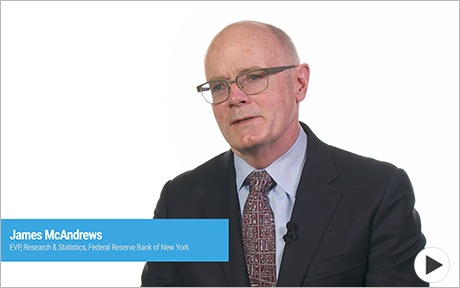The FRBNY DSGE Model Forecast—May 2016
The May 2016 forecast of the Federal Reserve Bank of New York’s (FRBNY) dynamic stochastic general equilibrium (DSGE) model remains broadly in line with those of our two previous semiannual reports (see our May 2015 and December 2015 posts). In the past year, the headwinds that contributed to slower growth in the aftermath of the financial crisis finally began to abate. However, the widening of credit spreads associated with swings in financial markets in the second half of 2015 and the first few months of this year have had a negative impact on economic activity. Despite this setback, the model expects a rebound in growth in the second half of the year, so that the medium-term forecast remains, as in the December post, one of steady, gradual economic expansion. The model also continues to predict gradual progress in the inflation rate toward the Federal Open Market Committee’s (FOMC) long-run target of 2 percent.
Happy Fifth Birthday, LSE!

When we launched our research blog five years ago this week, we didn’t expect to set any internet traffic records while writing about economics. Still, we saw that a blog would be a good way to build familiarity with our research and policy analysis, and to share the expertise of our staff when it’s relevant to issues in the public eye. As I said back at the birth, our goal was to deliver “lively, clear, and analytically sound” posts and, in that, I think we have succeeded.
From the Vault: The Path of Interest Rates
The FRBNY DSGE Model Meets Julia
Marco Del Negro, Marc Giannoni, Pearl Li, Erica Moszkowski, and Micah Smith We have implemented the FRBNY DSGE model in a free and open-source language called Julia. The code is posted here on GitHub, a public repository hosting service. This effort is the result of a collaboration between New York Fed staff and folks from […]
The FRBNY DSGE Model Forecast—November 2015
This post presents an update of the economic forecasts implied by the Federal Reserve Bank of New York’s (FRBNY) dynamic stochastic general equilibrium (DSGE) model, which we first introduced in a series of blog posts in September 2014.
How Much Do Inflation Expectations Matter for Inflation Dynamics?
Inflation dynamics are often described by some form of the Phillips curve.
Why Are Interest Rates So Low?
Marco Del Negro, Marc Giannoni, Matthew Cocci, Sara Shahanaghi, and Micah Smith Second post in the series In a recent series of blog posts, the former Chairman of the Federal Reserve System, Ben Bernanke, has asked the question: “Why are interest rates so low?” (See part 1, part 2, and part 3.) He refers, of […]
The FRBNY DSGE Model Forecast–April 2015
Marco Del Negro, Marc Giannoni, Matthew Cocci, Sara Shahanaghi, and Micah Smith First in a two-part series There are various types of economic forecasts, such as judgmental forecasts or model-based forecasts. In this post, we provide an update of the economic forecasts implied by the Federal Reserve Bank of New York’s (FRBNY) dynamic stochastic general […]
Choosing the Right Policy in Real Time (Why That’s Not Easy)
Marco Del Negro, Raiden B. Hasegawa, and Frank Schorfheide Second in a two-part series As an economist, you make policy recommendations at any point in time that depend on what model of the economy you have in mind and on your assessment of the state of the economy. One can see these points play out […]
Combining Models for Forecasting and Policy Analysis
Model uncertainty is pervasive. Economists, bloggers, policymakers all have different views of how the world works and what economic policies would make it better.















 RSS Feed
RSS Feed Follow Liberty Street Economics
Follow Liberty Street Economics